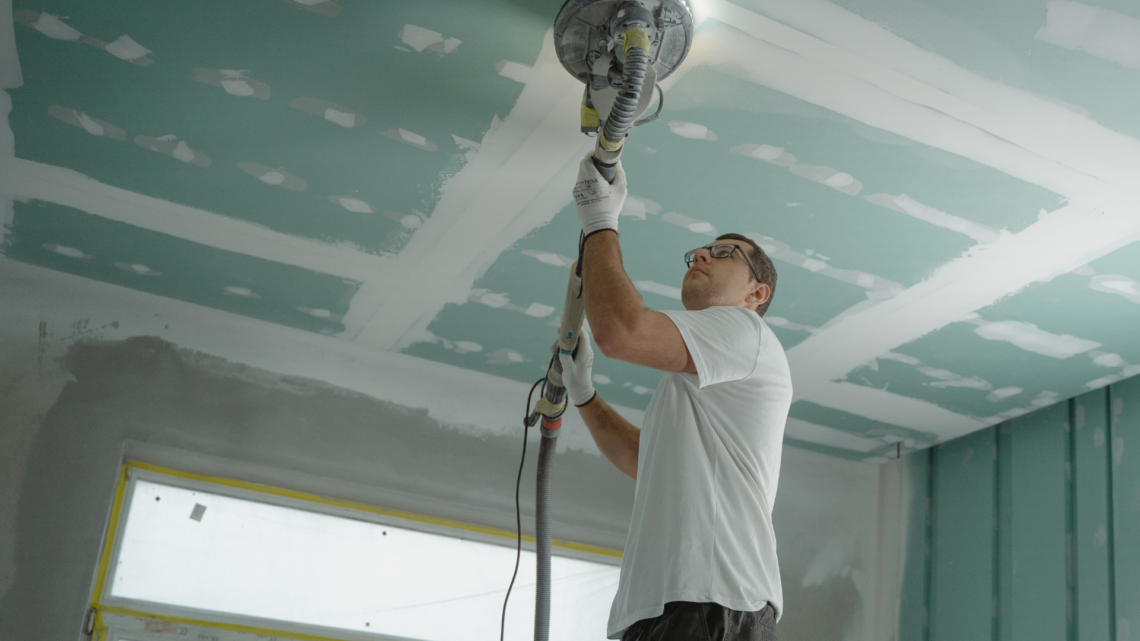
The Ultimate Guide to Ceiling Types: From Tray Ceilings to Coffered Ceilings
Looking to elevate the look of your new home’s interior? Look no further than your ceiling! Ceiling types can make a huge impact on the overall aesthetic of a room, and there are endless possibilities when it comes to design. From tray ceilings to coffered ceilings, we’ve got you covered with our ultimate guide to ceiling types.
When considering the range of options for ceiling types, it’s essential to factor in not just aesthetics but also practicality, especially in terms of durability and maintenance. While tray ceilings and coffered ceilings may add architectural interest and elegance to a space, they can also be more susceptible to water damage compared to simpler ceiling designs.
The recesses and detailing in these types of ceilings create potential hiding spots for moisture, which can lead to mold growth and structural issues if not properly addressed. Homeowners opting for these elaborate ceiling styles should be careful in ensuring adequate waterproofing measures are in place during construction. Additionally, if any water damage is noticed, calling experts in water damage reconstruction might be necessary to make your ceiling functional and aesthetic once again.
That said, sit back, relax, and get ready to discover the perfect ceiling for your space and how it can transform your space!
Tray Ceilings
Ceilings are a quintessential aspect of any room’s architectural and aesthetic appeal, setting the tone for the overall atmosphere.
Tray ceilings have become increasingly popular in recent years due to their ability to add dimension and depth, while creating an illusion of height. These unique ceilings feature recessed panels that slope upwards towards the center, allowing for intricate designs with varied materials such as wood or molding. They can also be enhanced with cove lighting or chandeliers to create a dramatic effect. Tray ceilings complement both modern and traditional styles and add an extra touch of elegance to any space.
When incorporated into a design scheme thoughtfully, tray ceilings enhance your home design and can transform ordinary rooms into extraordinary spaces that exude sophistication and luxury.
Traditional Ceilings
Traditional flat ceilings were once a common feature in homes and buildings, offering a simple yet functional design element. Typically composed of drywall or plaster, these ceilings provide a smooth surface that could be painted or adorned with decorative moldings.
While they may lack the visual interest of more intricate ceiling designs, traditional flat ceilings remain popular due to their affordability and ease of installation. Additionally, their neutral appearance allows for greater flexibility in decorating choices, as they do not clash with bold colors or patterns.
Coffered Ceilings
Coffered ceilings are characterized by their intricate grid patterns and recessed panels, and have been utilized for centuries to create visual interest and enhance the overall aesthetic appeal of interior spaces.
Originating in ancient Greece and Rome, they were initially crafted from stone or marble, but modern variations are often constructed using wood, plaster, or other materials.
Despite their stunning appearance and timeless appeal, coffered ceilings are not immune to damage, particularly from water infiltration. The intricate design of coffered ceilings, with their recessed panels and intersecting beams, creates numerous nooks and crannies where moisture can accumulate and seep in.
Detecting water damage in coffered ceilings can be challenging due to their complexity, often requiring thorough inspection and specialized restoration techniques to address the issue effectively. Timely intervention from a company like Protegrity Restoration is essential to prevent further damage and preserve the beauty and integrity of these architectural treasures.
Vaulted Ceilings
A vaulted ceiling is constructed from arches that span across the room. They provide a unique atmosphere and can be quite beautiful if done correctly.
However, vaults can be expensive to install and maintain, so you should only choose this type of ceiling if you really want it!
Pipe and Beam Ceilings
Pipe and beam ceilings are made from long, thin pieces of wood or steel that are arranged in a grid-like pattern on top of the walls. The beams support the weight of the roof above, while the pipes hold up the flooring below.
This type of ceiling is often used in larger spaces where durability and stability are important factors.
Vented Ceilings
A vented ceiling brings in fresh air and increases the comfort level of your home.
You can obtain these in a range of shapes and sizes. This means that they can be tailored to individual and family needs.
Installation Tips
Here are six tips for installing flat ceilings:
- Have your roof inspected. Before installing flat ceilings, it’s crucial to have your roof thoroughly inspected. A properly waterproofed roof is essential to prevent moisture from seeping through, which could lead to staining and damage to the new flat ceiling. Water leaks can compromise drywall and promote mold growth in the space between the roof and ceiling over time. To mitigate these risks, conduct a quick search online using keywords like “roofing companies near me” to find a qualified expert who can assess the condition of your roof and address any necessary repairs.
- Use the right materials. Flat ceilings are typically installed using drywall or sheetrock, both of which are relatively easy to work with. If you require something more ornate or decorative, you’ll need to look for an alternative type of ceiling system.
- Plan ahead. You will want to obtain estimates of the total cost of your project.
- Get help from a professional. It is always best to hire an expert when installing any kind of ceiling. They can more skillfully put in the ceiling and will be able to quickly identify any potential problems. It is a safe and efficient approach to take as a homeowner.
- Use caution when working on high surfaces. Ceilings tend to be high enough to need ladders and you do not want anything falling on anybody’s head below!
- Test the ceiling before installation begins. Get a professional to help you if you are unsure as to how to proceed.
Tip For Finding Ceiling Contractor for Complicated Jobs
If you’re in the market for a new ceiling or looking to have your current one repaired, finding the right contractor is crucial. To start your search, begin by asking friends and family members if they can recommend someone who has done work for them in the past.
You can also check online reviews and ratings on websites like Yelp or Angie’s List to see what other customers have said about their experiences with different contractors. When contacting potential contractors, be sure to ask about their experience with ceilings specifically and request references from previous clients.
Conclusion
In conclusion, the choice of ceiling type can significantly impact the overall aesthetic and functionality of a space. While tray ceilings and coffered ceilings offer architectural interest and elegance, they also come with potential challenges such as susceptibility to water damage. As mentioned before, homeowners must prioritize both aesthetics and practicality, ensuring proper waterproofing measures are in place during construction and promptly addressing any signs of water damage to maintain the beauty and structural integrity of these intricate designs. Using the services of a water damage restoration company can help fix any issues that may be present.
Moreover, traditional flat ceilings remain a popular choice for their affordability and versatility in decorating options. Whether opting for a classic flat design or exploring more elaborate options like vaulted or pipe and beam ceilings, careful consideration of budget, maintenance requirements, and desired atmosphere is essential. By understanding the characteristics and benefits of each ceiling type, homeowners can confidently select the perfect ceiling to elevate the look and feel of their living spaces, creating environments that exude sophistication and comfort for years to come.
From traditional to tray ceilings, we have shown you which ones are right for your home and what their benefits are. Whether you are looking for a classic or more contemporary look, we hope that our guide has shown you the direction in which you ought to head when looking for the perfect ceiling.





